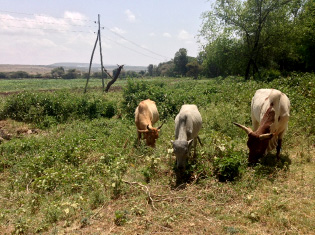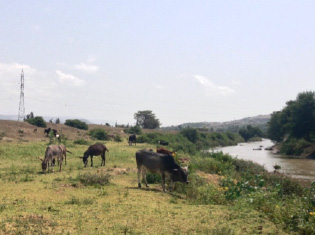 |
 |
 |
 |
notes from the field
These field notes are personal views and do not necessarily reflect the views of Red Cross/Red Crescent Climate Centre
Katie Chambers
Ethiopia
June - August, 2017
Lives Versus Livelihoods: Improving Warning Systems to Account for Both
August 2017
View photo gallery for more photos from the field by Katie Chambers
My time in the field has come to a close, and I’m thankful for all of the experiences that have come with it. Many thoughts are going through my mind following fieldwork, and I wanted to use a blog post to talk about just one. Lives versus livelihoods was a topic that consistently came up in community interviews, and I’ll go through my thoughts and findings in this post. For the purpose of this post, lives refers to human life and livelihoods refers to the means of supporting one’s life. The current warning system - as perceived by most communities - exists to protect lives. It ensures that no people are in the floodplain and harmed during controlled releases. While saving lives is unquestionably important, communities repeatedly expressed a desire to protect their livelihoods in addition to their lives.
Livestock grazing in the floodplain. |
So, how can the existing warning system be improved to incorporate this feedback? To answer a question like this, the first source to consult is the communities themselves. We went up and down Awash River to consult communities about their recommended improvements to the existing warnings and two emerged relating to the topic: earlier and more specific warnings. Communities wanted to receive earlier warnings to better prepare for flood events. The existing warnings only provide about a day’s notice for a controlled release, and most communities can only move irrigation pumps and livestock from the floodplain. Communities want earlier warnings for time to protect their livelihoods, such as place bags of soil to divert flood water or harvest crops early. In addition to earlier warnings, communities would like specific details on anticipated flood impacts. Some communities will have severe flooding impacts occur one year and minimal impacts the next year, but receive the same warning for both events. Communities want to know what the anticipated damage will be, so they can prepare appropriately.
Example of a dike constructed alongside the river |
Unfortunately, the existing warning system can be equipped with these recommendations and flooding can still affect livelihoods. Communities acknowledged this, and uniformly expressed a desire for permanent infrastructure to increase flood resilience and save livelihoods. Each of the seven communities visited wanted dikes (to prevent flooding from the river) and canals (to divert water from surrounding areas) to be constructed. It was interesting to contrast my internship’s approach (improving controlled releases and early warnings) with the community’s perspective on the situation, and it is certainly something to keep in mind going forward. In addition to work on hydroelectric dams and early warning systems, the Climate Centre and its partners are engaged in policy dialogues for rethinking infrastructure investments for climate risk management and resilience. Introducing this work into later phases of the project could benefit downstream communities by further increasing resilience, especially from flooding coming from the surrounding watershed.
From improved warnings, to infrastructure investments, to better timing of controlled releases, there are many potential ways to minimize flood impacts. I’m thankful for the challenge and the opportunity to play a role (however big or small it may end up being) in potentially improving the livelihoods of these communities.



